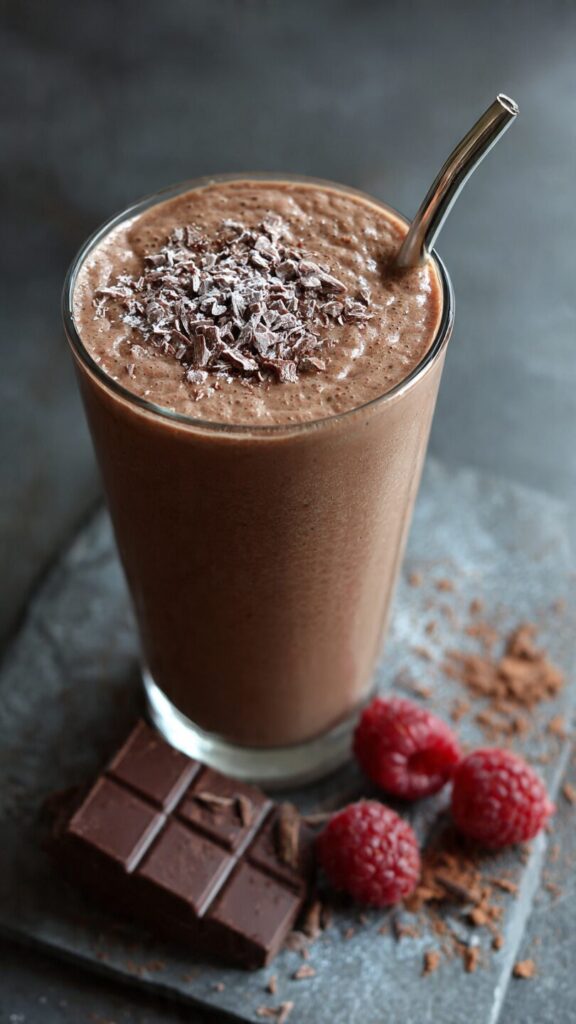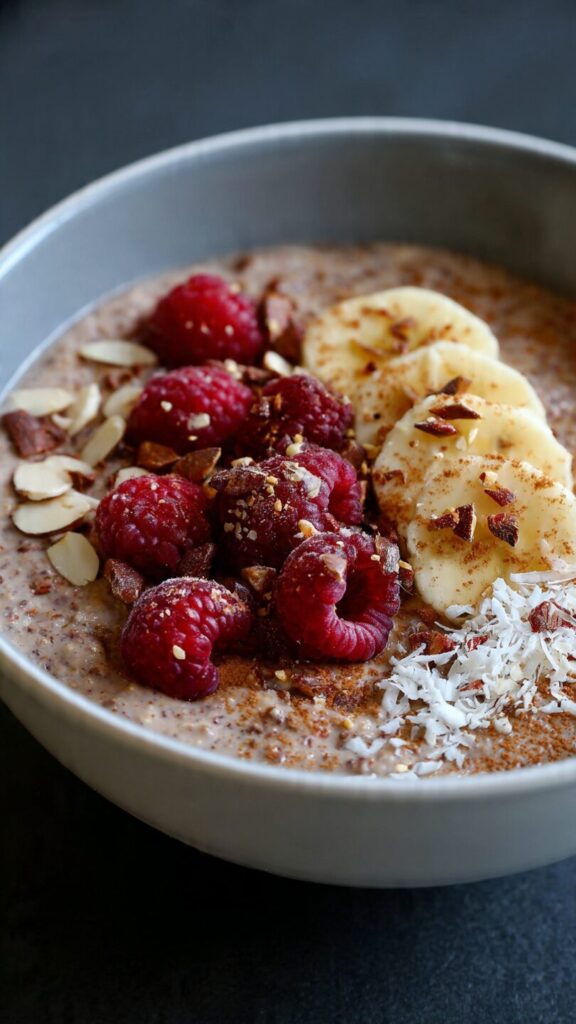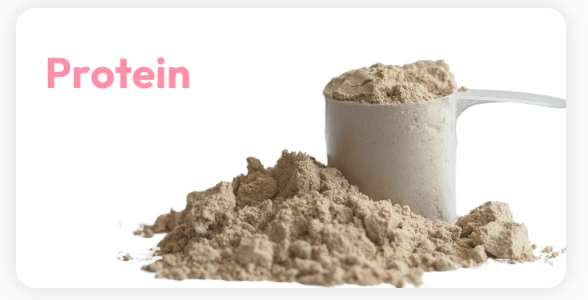5 Must-Try Protein Powder Recipes That Taste Amazing

Table of Contents
Introduction
Protein is one of the most vital macronutrients in human nutrition – not just for athletes, but for everyone aiming for better metabolism, balanced hormones, improved immunity, and healthy ageing.
Each cell in your body contains protein, and it forms the basis of your muscles, enzymes, neurotransmitters, skin, and even immune antibodies. According to the World Health Organization (WHO) and Food and Agriculture Organization (FAO), adults should consume at least 0.8-1 gm/kg/body weight of body weight daily, but recent research suggests that 1.2–1.6 g/kg is ideal for active adults, older individuals, or those on plant-based diets.
However, modern lifestyles make it challenging to consistently get high-quality protein from whole foods alone. Plant-based eaters often struggle with incomplete amino acid profiles, while many people skip meals due to time constraints. That’s where clean, verified protein powders – such as whey, pea, rice, or fermented yeast protein fill the nutritional gap.
At YouCare Lifestyle, every product under the Pink Tiger Verified program undergoes independent lab testing for heavy metals, microbial safety, label accuracy, and ingredient transparency ensuring that your protein is not just effective, but also safe and trustworthy.
Now let’s explore five research-backed, delicious, and easy-to-make recipes that show how protein powder can seamlessly fit into your daily meals – from breakfast to dessert.
1. Protein Pancakes
Perfect for: Morning nourishment or post-exercise recovery
Ingredients:
1 scoop clean protein powder (vanilla or unflavored)
1 ripe banana (mashed)
2 egg whites (or ¼ cup oat milk for vegan option)
1 tbsp oat flour or ground oats
¼ tsp baking powder
Dash of ceylon cinnamon
Pinch of pink salt
Instructions:
Mix all ingredients into a smooth batter.
Heat a non-stick pan and pour a ladleful of batter.
Cook on each side for 1–2 minutes until golden.
Top with berries, nut butter, or monk fruit syrup.
Science Behind It: Post-exercise, combining protein with carbohydrates increases muscle glycogen resynthesis and enhances recovery. Bananas replenish electrolytes like potassium, while eggs or vegan protein deliver complete amino acids to support muscle repair.
Nutritional Insight: Each serving provides roughly 22–25 g protein, complex carbs for energy, and zero refined sugar making it a complete breakfast meal that supports blood sugar stability and satiety.
2. Chocolate Protein Smoothie
Perfect for: Breakfast, post-workout, or mid-day meal replacement
Ingredients:
1 scoop chocolate protein powder
1 frozen banana
1 tbsp natural unsweetened peanut or almond butter
1 cup unsweetened almond milk
1 tsp chia seeds (optional)
A few ice cubes
Instructions:
Blend until smooth and creamy. Adjust thickness with more milk or ice as desired.
Scientific Insight: Protein shakes can effectively increase lean muscle mass and aid in fat loss when combined with resistance training. Peanut butter adds monounsaturated fats and arginine which promotes nitric oxide production and improved blood flow.
Nutritional Insight: Provides ~28 g protein, 10 g healthy fats, and abundant magnesium for energy metabolism.

3. Protein Oats
Perfect for: A fiber-rich, high-protein breakfast
Ingredients:
½ cup rolled oats
Add 1 scoop of your favourite Pink Tiger Verified protein – clean, safe, and trusted.
1 cup almond or oat milk
1 tbsp chia or flax seeds
Fresh fruits for topping
Instructions:
Cook oats in milk until soft.
Cool slightly and stir in protein powder (to avoid clumping).
Top with fruits, seeds, or nut butter.
Science Behind It: Oats are rich in β-glucans, soluble fibers that regulate cholesterol and improve gut microbiota diversity . The combination of fiber and protein helps maintain satiety, reduce cravings, and regulate postprandial glucose spikes.
YouCare Insight: Pairing verified protein powders with natural, whole ingredients maximizes nutrient bioavailability. Avoid heating protein powders at very high temperatures to preserve amino acid structure.
Nutritional Insight: Delivers ~30 g protein, 8 g fiber, and slow-digesting carbs ideal for blood sugar stability and endurance.

4. No-Bake Protein Balls
Perfect for: Mid-day snack, travel, or pre-workout fuel
Ingredients:
1 scoop protein powder
2 tbsp nut butter (almond or peanut)
1 tbsp honey
2 tbsp rolled oats
Optional: cocoa powder or dark chocolate chips
Instructions:
Combine all ingredients into a dough.
Roll into bite-sized balls and refrigerate for 30 minutes.
Store for up to one week in an airtight container.
Scientific Insight: High-protein snacks help control appetite by lowering ghrelin (hunger hormone) and increasing GLP-1 levels. Balanced macronutrient snacks like these provide stable energy release and prevent mid-day crashes.
Nutritional Insight: Each bite-sized ball delivers ~6–8 g protein and healthy fats, making it a nutrient-dense, on-the-go snack.
YouCare Tip: Choose Pink Tiger Verified nut butters that are free from palm oil, added sugars, or artificial stabilizers to keep your snack truly clean.
5. Protein Ice Cream
Perfect for: Evening treat or post-dinner protein boost
Ingredients:
1 frozen banana
1 scoop protein powder (chocolate or vanilla)
2 tbsp Greek yogurt (or coconut yogurt for vegan option)
1 tbsp unsweetened cocoa powder (optional)
Splash of almond milk
Instructions:
Blend all ingredients until creamy. Freeze 1–2 hours for scoopable texture.
Science Behind It: Consuming casein or mixed protein before sleep improves overnight muscle recovery and next-day metabolism. Greek yogurt adds probiotics that enhance digestion and calcium that supports muscle contraction.
Nutritional Insight: Each serving provides ~25 g protein and minimal sugar, helping balance blood glucose while satisfying dessert cravings.
The Science of Protein Metabolism
When consumed, protein breaks down into amino acids, which trigger muscle protein synthesis (MPS) – a key process for recovery, cellular repair, and immune support. However, the efficiency of MPS depends on:
Amino Acid Profile: Complete proteins (containing all 9 essential amino acids) optimize MPS.
Digestibility: Whey proteins are rapidly absorbed, while plant or fermented proteins provide sustained release.
Timing: Consuming protein within 30–60 minutes post-workout enhances anabolic response.
Emerging research on fermented yeast protein shows it delivers a complete amino acid profile with higher digestibility and a smaller carbon footprint compared to animal protein sources.That’s why Pink Lifestyle’s Verified Proteins – including plant-based blends and next-gen fermented yeast proteins -are carefully chosen for quality, sustainability, and safety.
Why Choose Pink Tiger Verified Protein Powders
Unlike mass-market supplements, all protein powders listed on YouCareLifestyle.com undergo independent Pink Tiger Verification a scientific, transparent process ensuring:
-Heavy metal screening (lead, mercury, arsenic, cadmium)
-Label accuracy (verified protein % per scoop)
-Absence of artificial sweeteners, synthetic additives, and fillers
Each product batch is traceable and supported with publicly available lab reports, enabling consumers to make informed, data-driven choices.

Expert Tips for Using Protein Powder Wisely
Timing matters: Take 20-40 g protein within 60 minutes post-workout for maximum muscle protein synthesis (MPS) and recovery benefits.
Pair with healthy fats: Combine protein with good fats to improve fat-soluble vitamin absorption (A, D, E, K) and sustain energy release.
Hydrate adequately: Protein metabolism increases nitrogen excretion – aim for 3–3.5 L water per day to support kidney function and digestion.
Don’t skip the carbs (CHO): Carbohydrates are essential partners to protein. They replenish glycogen stores, trigger insulin release (which helps shuttle amino acids into muscles), and improve overall protein utilization. Balance your shake or meal with complex carbs like oats, fruits, or millets for better recovery and performance.
Avoid artificial additives: Choose clean-label, Pink Tiger Verified proteins – free from artificial flavors, sugars, or fillers – for safe, effective results.
Alternate your sources: Rotate between plant, whey, and fermented proteins to diversify amino acid intake and improve gut tolerance.
Conclusion
These recipes prove that clean nutrition and culinary enjoyment can coexist beautifully. By adding verified protein powder to your everyday meals whether it’s breakfast pancakes, smoothie bowls, or post-dinner ice cream you nourish your body with scientifically validated, sustainable protein sources.
Choosing YouCare Verified protein powders means you’re not just optimizing your fitness – you’re also supporting transparent, safe, and planet-friendly nutrition.
Explore more science-backed food insights, verified health products, and clean-living tips only at YouCareLifestyle.com.
FAQ
1.How much protein should I eat per day?
The World Health Organization (WHO) recommends a baseline of 0.8 g protein/kg body weight/day for healthy adults, but research suggests that 1.2 – 1.6 g/kg/day better supports muscle maintenance, immune function, and metabolic health-especially for active adults, older adults, or those recovering from illness.
2.When is the best time to take protein?
Distribute your protein evenly across meals, ideally every 3-4 hours, and consume 20-40 g within 30-60 minutes after exercise to maximize muscle-protein synthesis (MPS).
3.Is cooking or baking with protein powder safe?
Yes-moderate heat (pancakes, oats, muffins) is safe and does not denature amino acids meaningfully. Just avoid very high or prolonged heat, and add protein powder near the end of cooking when possible for better texture.
4.Can protein powder aid in weight loss?
Yes- higher-protein diets (about 25–30% of total calories) help control appetite and support fat loss. Protein boosts satiety hormones like GLP-1 (Glucagon-Like Peptide-1) and PYY (Peptide YY), while lowering ghrelin, the hunger hormone. It also increases the thermic effect of food, meaning your body burns more calories during digestion leading to improved metabolism and sustainable weight loss.
5.Is too much protein harmful to kidneys?
For healthy adults, there is no evidence that intakes up to 2 g/kg/day impair kidney function. Those with chronic kidney disease should follow physician-supervised limits.
6.How can I ensure my protein supplement is safe?
Look for third-party lab verification for heavy metals, microbial load, and label accuracy. At YouCare Lifestyle, all “Pink Tiger Verified” products meet these criteria-transparent, clean, and free from harmful additives.
References
FAO/WHO/UNU. (2013). Protein and amino acid requirements in human nutrition (WHO Technical Report Series No. 935). World Health Organization. https://apps.who.int/iris/handle/10665/43411
Ivy, J. L., Katz, A. L., Cutler, C. L., Sherman, W. M., & Coyle, E. F. (2002). Muscle glycogen synthesis after exercise: Effect of time of carbohydrate ingestion. Journal of Applied Physiology, 93(4), 1337–1343. https://doi.org/10.1152/japplphysiol.00896.2001
Morton, R. W., Murphy, K. T., McKellar, S. R., Schoenfeld, B. J., Henselmans, M., Helms, E., Aragon, A., Devries, M. C., Banfield, L., Krieger, J. W., & Phillips, S. M. (2018). A systematic review, meta-analysis and meta-regression of the effect of protein supplementation on resistance training-induced gains in muscle mass and strength in healthy adults. British Journal of Sports Medicine, 52(6), 376–384. https://doi.org/10.1136/bjsports-017-097608
Phillips, S. M., Chevalier, S., & Leidy, H. J. (2016). Protein “requirements” beyond the RDA: Implications for optimizing health. Applied Physiology, Nutrition, and Metabolism, 41(5), 565–572. https://doi.org/10.1139/apnm-2015-0540
Ritala, A., Häkkinen, S. T., Toivari, M., & Wiebe, M. G. (2017). Single-cell protein—State-of-the-art, industrial landscape, and patents. Frontiers in Microbiology, 8, 2009. https://doi.org/10.3389/fmicb.2017.02009
Snijders, T., Res, P. T., Smeets, J. S. J., van Vliet, S., van Kranenburg, J., Maas, B., Kramer, I. F., van Loon, L. J. C. (2019). Protein ingestion before sleep increases overnight muscle protein synthesis rates in healthy older men: A randomized controlled trial. Journal of Nutrition, 149(5), 837–844. https://doi.org/10.1093/jn/nxy305
Tipton, K. D., & Wolfe, R. R. (2001). Exercise, protein metabolism, and muscle growth. International Journal of Sport Nutrition and Exercise Metabolism, 11(1), 109–132. https://doi.org/10.1123/ijsnem.11.1.109
Whitehead, A., Beck, E. J., Tosh, S., & Wolever, T. M. S. (2014). Cholesterol-lowering effects of oat β-glucan: A meta-analysis of randomized controlled trials. American Journal of Clinical Nutrition, 100(6), 1413–1421. https://doi.org/10.3945/ajcn.114.086199
Westerterp-Plantenga, M. S., Lejeune, M. P. G. M., Nieman, D. C., Casanueva, F., & Toubro, S. (2009). High-protein diets and body-weight regulation: A review. British Journal of Nutrition, 101(6), 795–798. https://doi.org/10.1017/S0007114508137705